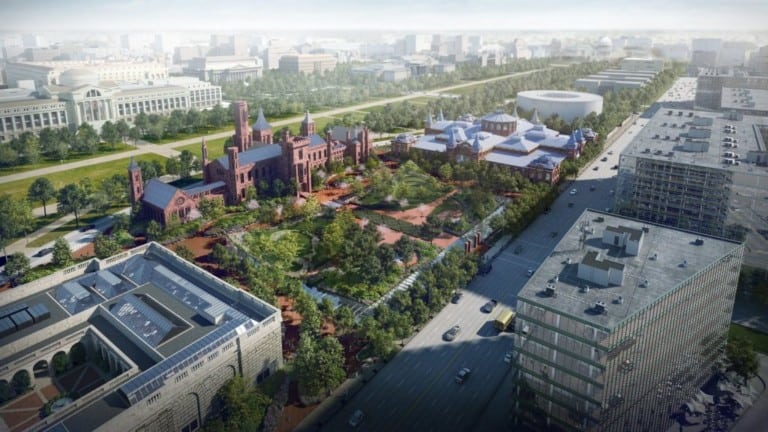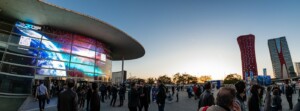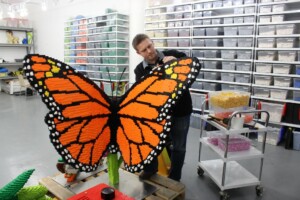The Smithsonian Institution has announced that it is abandoning its dramatic Bjarke Ingels redevelopment to a much more modest programme of remodelling and repair.
The ambitious and contentious $2 billion futuristic master plan was unveiled by the Smithsonian in 2014. Designed by Danish architecture firm Bjarke Ingels Group (BIG), it was intended to create a radical makeover of the institution’s 17-acre site in Washington DC. A dramatically less ambitious plan will be now unveiled.
The sea-change, after six years of debate and design changes, came when Lonnie G Bunch III became secretary of the Smithsonian last year. He took the radical step of re-evaluating the entire project. While the Smithsonian says the change in plans is simply ‘part of the evolutionary process’, it seems financial considerations are behind the surprise reversal. The museum announced losses of $49 million as a result of COVID lockdowns and reduced attendance.
The new plans will revolve around simply renovating existing structures, such as the Castle and the Arts and Industries Building (both National Historic Landmarks). An underground central utility park to serve the two buildings will be part of the new scheme of work.
The end of a long process
The Bjarke Ingels’ plan was always controversial. It was the subject of many public hearings and plans underwent several changes before final approval was given by the National Capital Planning Commission in June 2018. Construction was slated to start this year and expected to take up to 30 years to complete.
The massive project featured new entrances for the National Museum of African Art and the Arthur M. Sackler Gallery. The Smithsonian Institution Building (known as the Castle and originally designed by James Renwick) would have received an underground extension. The plan was to excavate to allow light into the Quadrangle Building. A new landscape would have been constructed on the roof. Subterranean galleries for the Hirshhorn Museum and Sculpture Garden were also planned.
The new proposals will be presented to the National Capital Planning Commission tomorrow.
London plans also cancelled
The news follows on the announcement, last September, that the institution was also abandoning its plans to open a London-based branch, in collaboration with the Victoria & Albert Museum, due to open in 2023. The gallery, V&A East, was set to include a five-storey museum alongside a new collection and research centre, to be built at the Queen Elizabeth Olympic Park in east London.
In a joint statement the V&A and Smithsonian Institution said: “Due to evolving strategic priorities, and in the context of the effects of COVID-19, the V&A and Smithsonian Institution have agreed not to continue with their curatorial partnership at V&A East.”
Future plans for two new national museums
However, while the major masterplan will no longer happen, the Smithsonian still plans extensions for the future. Congress has given its approval for a National Museum of the American Latino. An American Women’s History Museum was also included in the year-end omnibus spending bill. The proposed museums will bring the number of Smithsonian museums to 21. However, it’s unlikely either will be able to open for at least ten years.
Lonnie Bunch is adamant that the Smithsonian will continue to serve the public and reach new audiences, regardless of its rebuilding plans. “The past 12 months, especially, have been a lesson in how the Smithsonian can serve our public,” he said in the Smithsonian Magazine. “We can grow our digital capabilities to reach new audiences. We can work closely with teachers, students and families to provide invaluable educational support. We can marshal our expertise and our collections to facilitate productive conversations around the most divisive issues.”
He concluded: “In moments of crisis, people turn to institutions they trust. This past year demonstrated how important it is to protect our institutions, and in turn, how those institutions must work to help their communities.”
Tim Reeve and Gus Casely-Hayford discussed the V&A East project at the blooloop V-Expo:
Image: Bjarke Ingels















